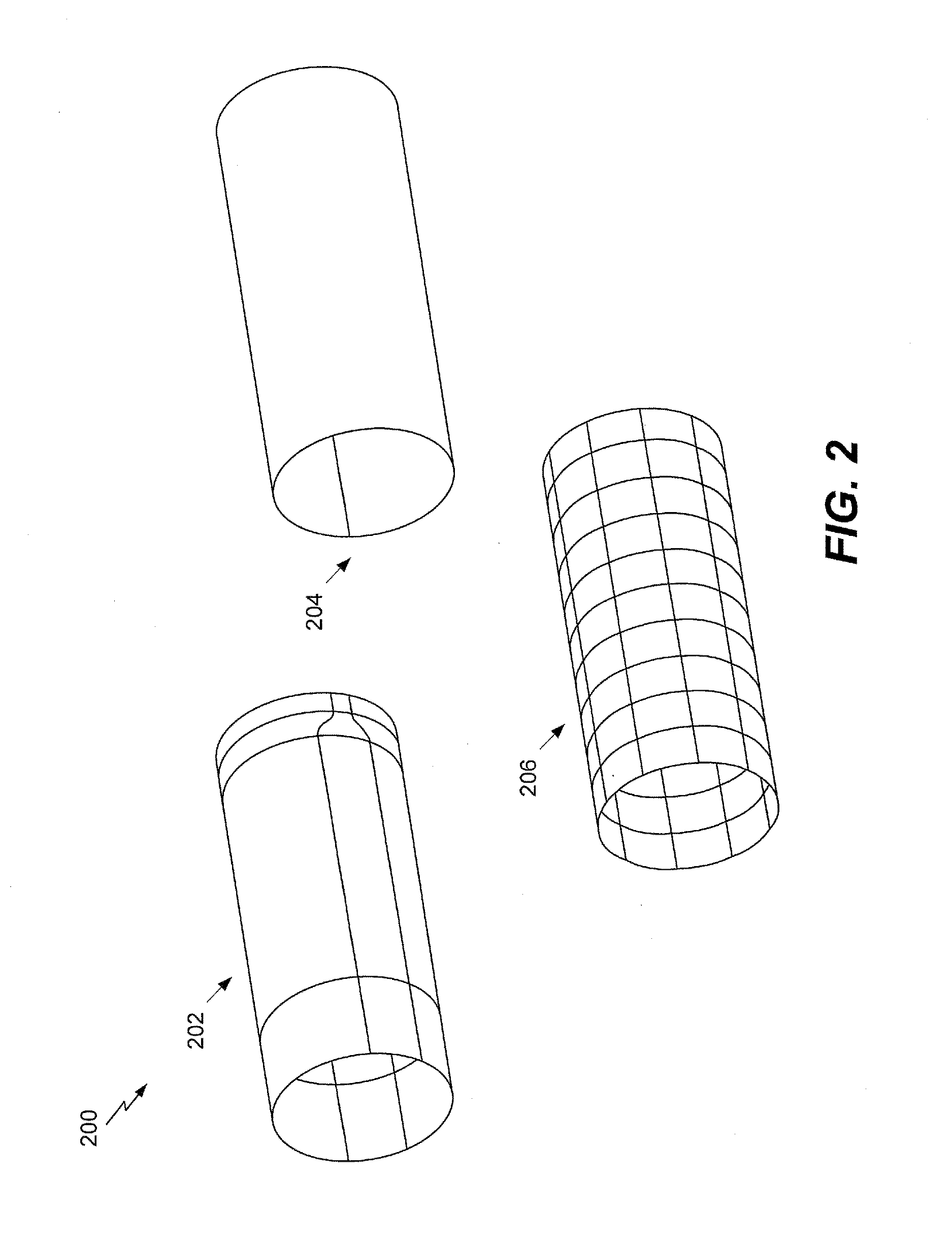Surface modeling
a surface modeling and surface technology, applied in the field of surface modeling, can solve the problems of generating an accurate representation of the outer surface of an object using existing modeling tools, changing the shape of the outside of the aircraft's skin, and using modeling tools
- Summary
- Abstract
- Description
- Claims
- Application Information
AI Technical Summary
Benefits of technology
Problems solved by technology
Method used
Image
Examples
Embodiment Construction
[0022]In some cases, fuselages for different aircraft designs may use the same internal interface for frames and stringers (referred to herein as an “inner skin assembly” or ISA), in order to have as many commonalities as possible to reduce re-engineering. In the case of a stretched fuselage skin, additional composite plies may be utilized to meet the aircraft's structural requirements. The addition of such composite plies results in a change of shape of an outside of the aircraft's skin. In order to fasten frames and other parts to the aircraft's skin, engineers rely on a precise shape of the final aircraft skin (referred to herein as an “outer skin surface” or OSS). Shapes of ply ramps are particularly important (e.g., for accurate identification of fastener locations). The model of the present disclosure may be used for the purposes of drilling holes for fasteners. It may be desirable for the fasteners to be attached to a fuselage (or other aircraft component) substantially perpe...
PUM
 Login to View More
Login to View More Abstract
Description
Claims
Application Information
 Login to View More
Login to View More - R&D
- Intellectual Property
- Life Sciences
- Materials
- Tech Scout
- Unparalleled Data Quality
- Higher Quality Content
- 60% Fewer Hallucinations
Browse by: Latest US Patents, China's latest patents, Technical Efficacy Thesaurus, Application Domain, Technology Topic, Popular Technical Reports.
© 2025 PatSnap. All rights reserved.Legal|Privacy policy|Modern Slavery Act Transparency Statement|Sitemap|About US| Contact US: help@patsnap.com



